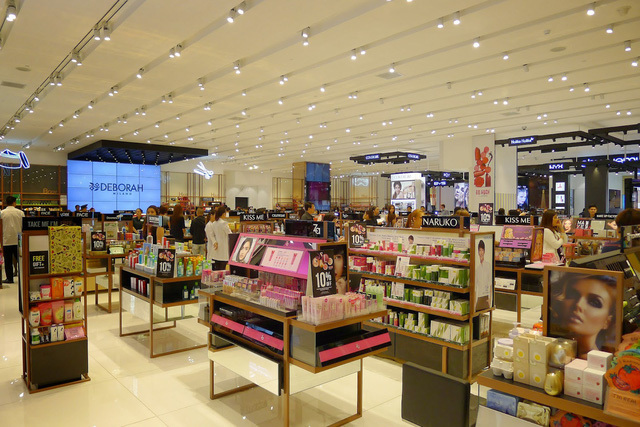Analysts say Vietnam’s cosmetics market is relatively small compared with other markets. However, it has been growing very rapidly and is worth investing in.

Vietnam is relatively small compared with other markets
International experts predict that the middle-class population in Vietnam will reach 33 million by 2020. Mintel, a market analysis firm, estimated that Vietnam’s cosmetics market has the value of $2.3 billion this year.
The domestic market is controlled by foreign names with 90 percent of market share. South Korea is the leading cosmetics supplier in Asia, including Vietnam. The country’s success in exporting cultural value is behind its success in the cosmetics industry, especially after South Korea signed an FTA with Vietnam in 2015.
|
A report from the HCMC Cosmetics Association showed that 30 percent of revenue from cosmetics in Vietnam go to South Korean suppliers’ pockets. The EU is holding 23 percent of market share, followed by Japan with 17 percent, Thailand 13 percent, and the US 10 percent. The remaining countries hold 7 percent of market share. |
A report from the HCMC Cosmetics Association showed that 30 percent of revenue from cosmetics in Vietnam go to South Korean suppliers’ pockets. The EU is holding 23 percent of market share, followed by Japan with 17 percent, Thailand 13 percent, and the US 10 percent. The remaining countries hold 7 percent of market share.
According to Nielsen, Vietnam’s spending level on cosmetics remains modest, $4 per head per annum, much lower than Thailand with the average spending of $20. As such, the Vietnamese market remains promising for cosmetics manufacturers.
Vietnamese cosmetics companies, with 10 percent of market share, can sell products in the low-cost market segment and export products to some neighboring markets. 90 percent of Vietnamese companies act as sales agents for foreign brands. At shopping malls, foreign-made products are dominant.
Sai Gon Cosmetics, a Vietnamese owned company, for example, sells products mostly in rural areas and traditional markets. About 500,000 bottles of perfume sell a year at VND60,000 per 50 ml bottle. Its exports to Cambodia, Laos and Thailand bring 40 percent of total revenue. However, to date, its products cannot enter shopping malls.
Similarly, Lan Hao-Thorakao reported 30 percent growth rate of revenue from the domestic market, but it has been relying on exports.
Deputy chair of the Association of Essential Oil - Aromatherapy – Cosmetics, Nguyen Van Minh, pointed out some reasons behind this. Vietnamese enterprises focus on product quality, but don’t pay appropriate attention to packaging, design and marketing.
In addition, some Vietnamese brands target export markets, and don’t spend money on advertisements in Vietnam. As a result, their products remain unknown to Vietnamese customers. And Vietnamese high-income earners prefer foreign products.
Currently, Vietnamese producers have to import most input materials, including chemicals from Germany and essential oils from France. They mostly do preparations and sales.
RELATED NEWS
Vietnamese spend billions of VND on imported cosmetics
Vietnam's US$2 billion cosmetics market controlled by foreign brands
Kim Chi
 Vietnam’s cosmetics market is worth $2.3 billion, but domestic companies pocket only 10 percent of the value.
Vietnam’s cosmetics market is worth $2.3 billion, but domestic companies pocket only 10 percent of the value.